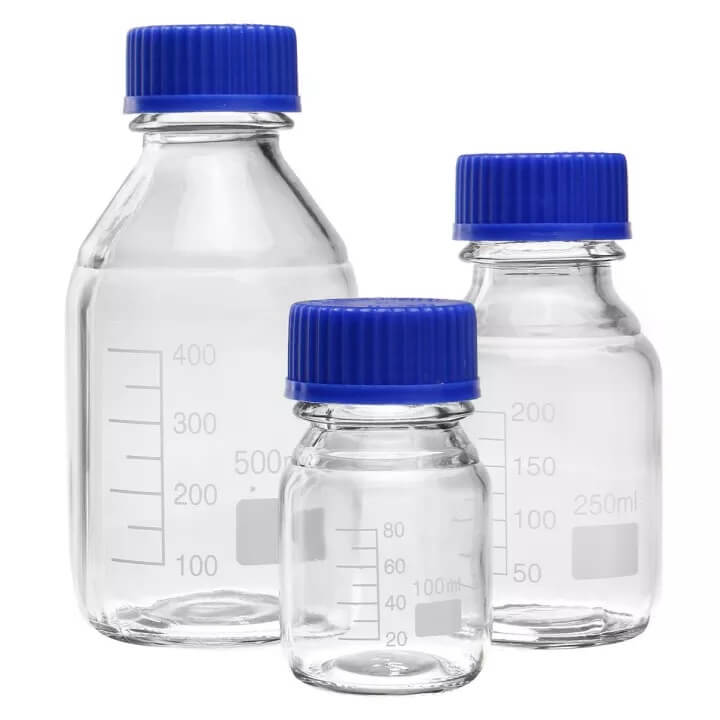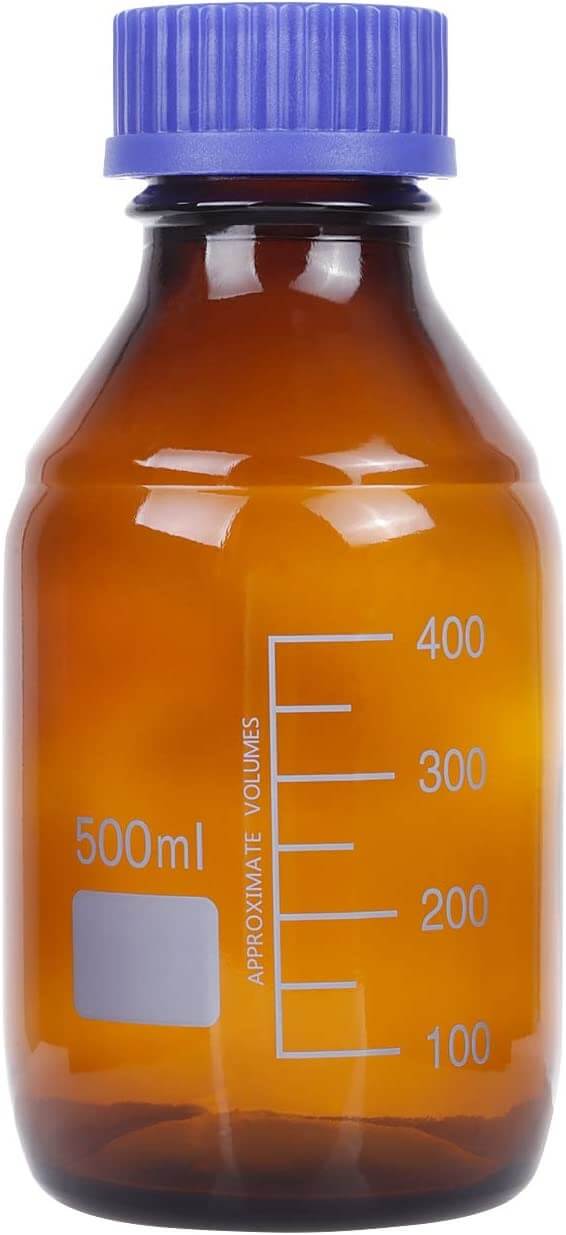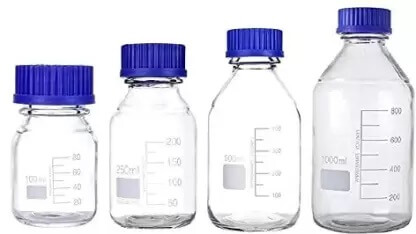Do you really know about Reagent Bottles?
Reagent bottles typically come in two colors: clear and amber. Clear bottles are ideal for displaying items and amber bottles protect the contents from light. Sizes range from 30 ml (1 ounce) up to 20000 ml (about 5 gallons) and the larger ones may be used to store preserved biological specimens in the lab.


How to use a reagent bottle?
Precautions for use:
1. when the reagent bottle is not used, you need to slip the paper between the bottle stopper and the bottle mouth to prevent adhesion. As mentioned above, none of the reagent bottles can be used for heating.
2. according to holding the physical and chemical properties of the reagents needed reagent bottles of the general principle is: dress up solid reagent selection jar, holding liquid reagent – choose fine mouth bottle, all see light is easy to break down, or metamorphic reagent to choose a brown bottle, holding low boiling point volatile reagent chooses a frosted glass reagent bottle, holding an alkaline reagent selection with a rubber plug reagent bottles, and so on. If the reagent has the above multiple physical and chemical indexes, the appropriate reagent bottle can be selected according to the above principles.
3. some special reagents, such as hydrofluoric acid, are not available in any glass reagent bottles and are used in plastic bottles.

What are the main classifications of reagent bottles?
Reagents cannot be stored without external packaging reagent bottles, and different reagents need to be stored in plastic packaging. Commonly used reagent storage containers are generally stored in glass reagent bottles. Reagent bottles can be divided into glass bottles and plastic bottles in terms of material. In terms of the types of reagents stored and stored, the bottle mouths mainly have screw mouths and frosted mouths.
The reagent bottles mainly include ground-mouth reagent bottles, wide-mouth reagent bottles, screw-mouth reagent bottles, chemical reagent bottles, etc. Some reagents need to be stored in plastic reagent bottles. For example, hydrofluoric acid is an aqueous solution of hydrogen fluoride, which is highly corrosive. Hydrofluoric acid can dissolve glass (silica) that many other acids cannot dissolve, but it does not react with plastics. Therefore, plastic reagent bottles are generally used to contain hydrofluoric acid. The solid caustic soda, soda lime, and other reagent containers also use plastic reagent bottles, and the wash bottles containing distilled water also use PET plastic reagent bottles.
Reagent bottles are mainly divided into narrow-mouth bottles and wide-mouth bottles in terms of shape. They are divided into colorless and brown in terms of color. Wide-mouth bottles contain solid medicines, brown bottles contain solids that are easy to decompose when exposed to light, and narrow-mouth bottles contain liquids. , The brown narrow-mouth bottle contains liquid that is easy to decompose when exposed to light. The stopper is selected to meet the standard stopper specifications for the pH of the solid and the solution.
Back to List
-
 下午4:09Weighing the Pros and Cons of PTFE/Silicone Septa
下午4:09Weighing the Pros and Cons of PTFE/Silicone Septa -
 下午4:05Decoding Vial Discard Guidelines: Ensuring Precision in Chromatography
下午4:05Decoding Vial Discard Guidelines: Ensuring Precision in Chromatography -
 下午5:01Navigating Micro Inserts for HPLC Vials: A Comprehensive Guide
下午5:01Navigating Micro Inserts for HPLC Vials: A Comprehensive Guide -
.jpg) 下午2:02Common faults and solutions of automatic samplers(2)
下午2:02Common faults and solutions of automatic samplers(2) -
 下午5:08Ensuring Sample Integrity: Navigating EPA Storage Vials Stability Guidelines
下午5:08Ensuring Sample Integrity: Navigating EPA Storage Vials Stability Guidelines

